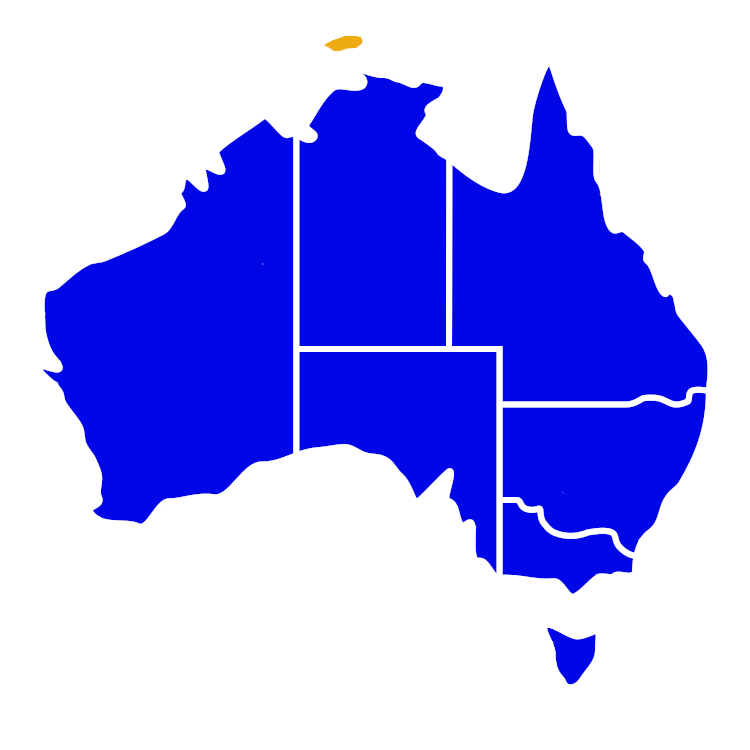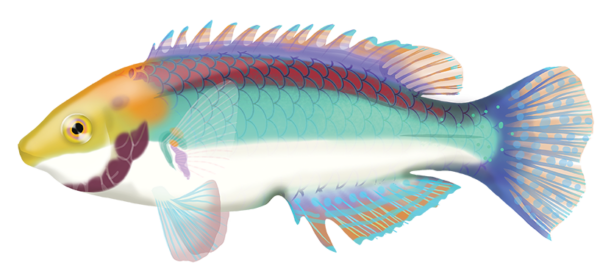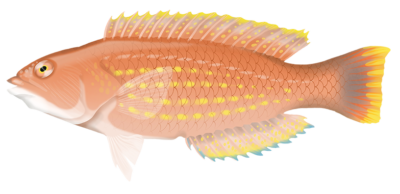Quick Facts
Distribution

Interesting Info
- The red eye Wrasse is found in the Western Pacific region, which includes parts of Australia. They are often found reefs in the warm waters of the Northern Territory.
- The red eye wrasse is a brilliantly coloured marine fish. The body can be a combination of red, orange, bright blue or purplish-blue. As their name suggests, these wrasse have a prominent red or orange area around their eyes which contrasts with their bright body.
- Red eye wrasses have a varied diet consisting of small benthic invertebrates, including worms, crustaceans, and molluscs. They use their specialised mouth to pluck off these organisms from the substrate.
- Red eye wrasses are known for their active and playful behaviour. They spend a lot of their time swimming around in search of food, interacting with other fish, and exploring their surroundings.
- During the mating display, males undergo a significant colour change, known as “nuptial coloration”. The display includes rapid swimming and color changes, all intended to attract a female’s attention.
- Interestingly, red eye wrasses are protogynous hermaphrodites. This means they have the ability to change sex from female to male, usually triggered when there is a shortage of males in the population.
- Estimated lifespan is up to 10 years with a average of 7.
Species Interaction
Aquarium, Snorkeling & Diving
The Red Eye Wrasse can be a fascinating species to observe for snorkelers and divers. Their vibrant colours, active nature, and unique social and mating behaviours make them fascinating to watch. However, due to their preference for deeper coral reefs, scuba diving equipment is usually necessary for observation. Their vibrant colours and smaller size also make them popular for aquariums, but they must be well established.
Scientific Classification
Kingdom: Animalia
Phylum: Chordata
Class: Actinopterygii
Order: Perciformes
Family: Labridae
Genus: Cirrhilabrus
Species: Cirrhilabrus Solorensis
Conservation Status
The red eye wrasse is not considered threatened or endangered in Australia and is not currently evaluated by the International Union for Conservation of Nature (IUCN).
Red Eye Wrasse
As Aquarium Fish
Care Level: Moderate to difficult
Temperament: Peaceful
Diet: Omnivore
Reef Compatible: Yes
Minimum Tank Size: 80 gallons
Recreational Viewing
- Snorkeling & Scuba
Finding: Easy
Temperament: Peaceful
Location: Inner Reef, Outer Reef, Lagoon
Danger: None





